You might have to watch the immensely popular 2020 television show Workers (做工的人) first to fully experience the emotional impact of the movie version. This reviewer admittedly didn’t, and although there’s quite a bit of background missing, it’s still a heartwarming crowd-pleaser showing the bonds between a group of struggling yet big-hearted laborers and their loved ones.
Set 11 years before the main events of the television series, the film is a prequel showing how three friends — A-chi (Christopher Lee, 李銘順), Brother Chang (Yu An-shun, 游安順) and A-quan (Hsueh Shih-ling, 薛仕凌) — met at the same construction site and developed an unbreakable friendship despite their age differences. A-chi is middle aged, Brother Chang probably in his 50s and A-quan in his 20s. Although they are best buds in the series, the actors have to press the reset button and act like they don’t know each other yet in the film.
The construction scenes are shot at the site of the massive and visually striking Taichung International Conference and Exhibition Center, and the actors trained hard to be able to effortlessly stroll and perform work on eight-story high beams under punishing temperatures. They said in an interview that the sites for the TV series were much less challenging and, while shooting the movie, they gained a renewed respect for this line of work.

Photo courtesy of Damou Entertainment and CPT Entertainment
A-chi’s son, Hsiao-chieh (Tang Hao-che, 唐浩哲), grown up in the TV series, is here a rebellious child who is bullied at school due to his father’s job and the family’s financial situation. Hsiao-chieh resents his father, constantly bickering with him and calling him a good-for-nothing. He later meets a classmate whose home situation is far worse and tries to help him renovate the dilapidated shack he lives in with his grandmother.
The three protagonists dream of being rich, and their harebrained schemes are a major plot in the television show. However, they’re careless and gullible, and keep falling for scams or getting into mishaps where they fall further into debt. This time, they desperately try to enter the popular TV game show “Who’s the Lucky One,” hosted by a hilariously tacky Aaron Yan (炎亞綸), with the prize being a new car, which they plan to sell. It seems that Yan has been making cameos in every other local film these days in roles that go against his pretty-boy image, which he pulls of here with amusing panache.
Although the tone is light-hearted, funny and a bit absurd, the hardships the characters face are still bitingly real, and there’s much sadness hidden beneath the characters’ carefree, trash-talking facades. People do look down on them, and in one scene A-chi feels too embarrassed to say hi to his son in the subway after a woman criticized his smelly, dirty work clothes. In another scene, A-quan talks candidly about being orphaned at a young age and having no family.
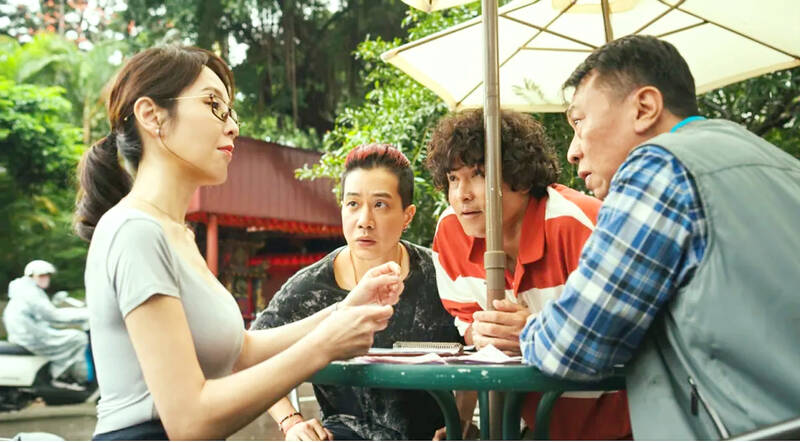
Photo courtesy of Damou Entertainment and CPT Entertainment
Despite this, they still enjoy life and time with their loved ones, who stick with them through thick and thin. Brother Chang’s wife (苗可麗, Miao Ke-li), who works at the construction site with him, especially stands out as strong and dominating yet caring and supportive, even during his screw-ups.
What stands out the most, however, is how generous and loyal the characters are toward each other. Even when they’re struggling, they are willing to drop everything and help. Although rather stereotypical, the characters are complex and fleshed out, and most importantly likable. It’s an effective way to bring attention to the less fortunate in society without being too exploitative, and it truly brings to life these nameless laborers we walk past every day.
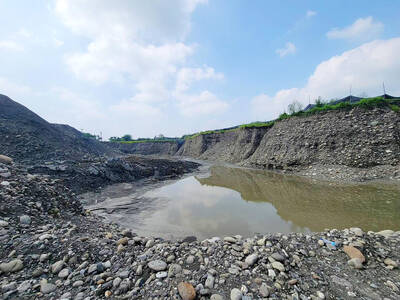
Last week the story of the giant illegal crater dug in Kaohsiung’s Meinong District (美濃) emerged into the public consciousness. The site was used for sand and gravel extraction, and then filled with construction waste. Locals referred to it sardonically as the “Meinong Grand Canyon,” according to media reports, because it was 2 hectares in length and 10 meters deep. The land involved included both state-owned and local farm land. Local media said that the site had generated NT$300 million in profits, against fines of a few million and the loss of some excavators. OFFICIAL CORRUPTION? The site had been seized
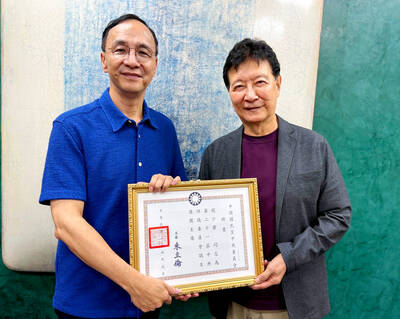
Next week, candidates will officially register to run for chair of the Chinese Nationalist Party (KMT). By the end of Friday, we will know who has registered for the Oct. 18 election. The number of declared candidates has been fluctuating daily. Some candidates registering may be disqualified, so the final list may be in flux for weeks. The list of likely candidates ranges from deep blue to deeper blue to deepest blue, bordering on red (pro-Chinese Communist Party, CCP). Unless current Chairman Eric Chu (朱立倫) can be convinced to run for re-election, the party looks likely to shift towards more hardline
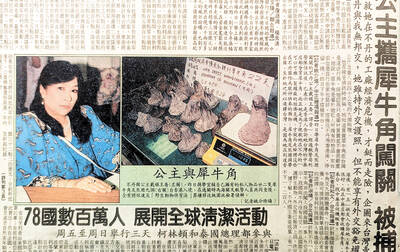
Sept. 15 to Sept. 21 A Bhutanese princess caught at Taoyuan Airport with 22 rhino horns — worth about NT$31 million today — might have been just another curious front-page story. But the Sept. 17, 1993 incident came at a sensitive moment. Taiwan, dubbed “Die-wan” by the British conservationist group Environmental Investigation Agency (EIA), was under international fire for being a major hub for rhino horn. Just 10 days earlier, US secretary of the interior Bruce Babbitt had recommended sanctions against Taiwan for its “failure to end its participation in rhinoceros horn trade.” Even though Taiwan had restricted imports since 1985 and enacted
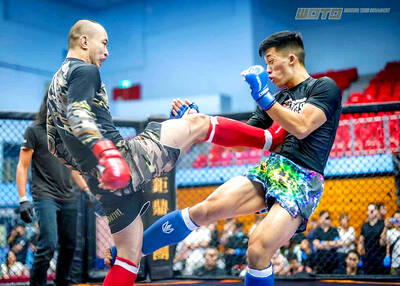
Enter the Dragon 13 will bring Taiwan’s first taste of Dirty Boxing Sunday at Taipei Gymnasium, one highlight of a mixed-rules card blending new formats with traditional MMA. The undercard starts at 10:30am, with the main card beginning at 4pm. Tickets are NT$1,200. Dirty Boxing is a US-born ruleset popularized by fighters Mike Perry and Jon Jones as an alternative to boxing. The format has gained traction overseas, with its inaugural championship streamed free to millions on YouTube, Facebook and Instagram. Taiwan’s version allows punches and elbows with clinch striking, but bans kicks, knees and takedowns. The rules are stricter than the